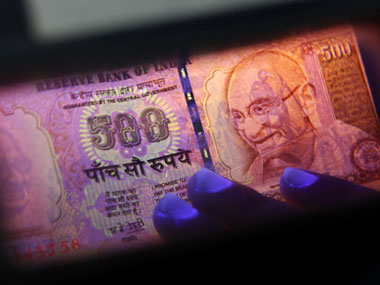Here’s someone else who doesn’t think Greek woes are to blame for the rupee’s precipitous decline of recent weeks: Shankar Acharya.
The former chief economic advisor to the government, believes the “real cause of the rupee’s weakness is the relentless deterioration in our economic policies in recent years”. “A falling rupee is simply a symptom of the underlying disease: unsound economic policies,” he writes in a column in Business Standard.
[caption id=“attachment_316228” align=“alignleft” width=“380” caption=“We know who is to blame for the rupee’s downfall and what needs to be done about it.”]  [/caption]
The reasons he gives are familiar: a bursting current account deficit that has hit 4 percent of GDP, a combined fiscal deficit (states and centre) that has stayed above 8 percent since 2009, persistent inflation, deteriorating investments and regulatory/policy hurdles in a range of sectors from fertilisers and power to airlines and telecom.
This state of affairs was neither pre-ordained or unavoidable. “They reflect prolonged disarray, indecision (and sometimes corruption) and political “compulsion” (a kind of revealed preference) in favour of soft options,” he writes.
While apportioning some blame to the Reserve Bank of India, Acharya says “the primary responsibility for worsening economic policies clearly lies with government and includes: the costly tightening of environmental regulations in 2010, which hit major completed and ongoing projects and sharply curtailed areas for coal mining; and the proliferation of major scams in the allocation of government-controlled resources (such as telecom spectrum) and their aftermath of near stasis in governmental decision-making with adverse consequences for the investment climate”.
Which is why the Reserve Bank of India’s steps to stem the rupee’s slide are short-fixes at best.
He offers a five-point plan to the government to fix the rupee’s problems: raisepetroleum and fertiliser prices to reduce burgeoning subsidies; implement some mood-lifting reforms; de-bottleneck large, ongoing public and private-sector projects, accelerate efforts to achieve agreement with opposition parties to implement the goods and services tax, and better co-operation between the government and the RBI in planning contingency measures to deal with the consequences of further turbulence in the eurozone.
The point is, we know who is to blame for the rupee’s downfall and what needs to be done about it. The government, however, has its own plans to fix the economic mess – and it doesn’t involve any of the above-mentioned suggestions. Its plan to fix the economic mess we’re in, however is to introduce austerity measures, which in all probability will apply to the aam aadmi than to politicians or favoured fat cats, as this Firstpost story notes.


)
)
)
)
)
)
)
)
)



